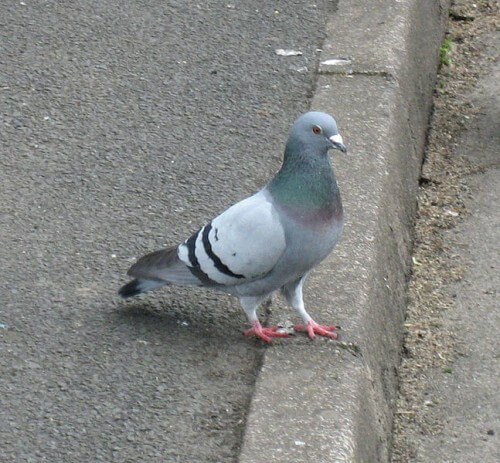In the physics department at Ariel University, Prof. Edward Burmashenko researches water-repellent surfaces in nature, and develops biomimetic imitations of them

By: Yael Halfman Cohen
In the physics department at Ariel University, Prof. Edward Burmashenko researches water-repellent surfaces in nature, and develops biomimetic imitations of them.
Burmashenko, Professor of Physics at Ariel University, has been researching the physical properties of the surface for over 20 years. His early studies dealt with the lotus leaf, which we have already written about before in this newsletter. Years ago, when his daughter was playing in the rain, she drew his attention to a dry bird, its feathers seemingly impervious to water.
It was the eureka moment, the BIO_WOW, that opened up a new research path for him. Since then, Burmashenko has been researching bird wings, and developing ways to imitate their ability to repel water (superhydrophobicity). The surface of the pigeon's wing (like the wings of other birds) is a perfect raincoat, repels water and prevents dirt from sticking to the body. Using techniques from physics and nanotechnology Burmashenko was able to mimic the surface and produce a superhydrophobic polymer. "It all stems from the stiffness of the feathers. The surface of the feathers is covered with tiny grooves at the nano level, with a width of between 100 nanometers and 10 microns."
The unique grooves trap a layer of air around the feather, preventing liquids from connecting to the wing surface. This structure contradicts the popular opinion that bird feathers are covered with oil, a solution found in winged animals that live on water (such as ducks of various kinds).
Applications for water and dirt repellent surfaces are possible in many fields, in organic and inorganic materials such as metals. Among the possible applications are water-repellent textiles and tents, ships with a dirt-repellent surface, which reduces the need for cleaning (ships and tanks are usually cleaned once a year, in a process that is not environmentally friendly and requires time and resources). Additional applications are also possible in the medical field, because superhydrophobic surfaces also repel other liquids, such as urine and blood, in addition to water.
Noah probably had a good reason to send the pigeon outside the box to look for dry land, and we, the engineers and planners, probably have many good reasons to learn from nature's design solutions.
Source of knowledge

2 תגובות
Illustrative charts are missing.
interesting,
Because there are many birds that get wet in the rain and need time to dry,
So are waterfowl such as the cormorants, the snakes and others
that after staying in the water
They go out and "slice" their wings to dry.
Among other things it says:
"This structure contradicts the popular opinion that bird feathers are covered in oil,
A solution found in winged animals that live on the water (like ducks of all kinds)'.
And I claim that there is no such "common opinion"!